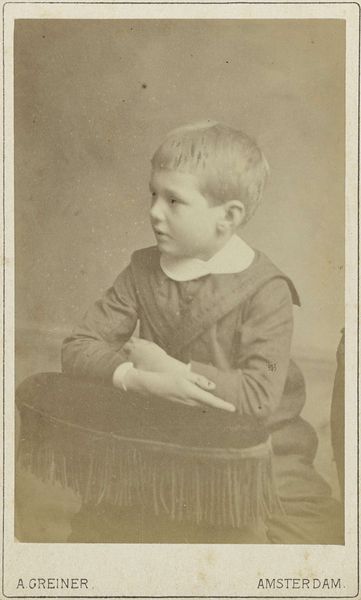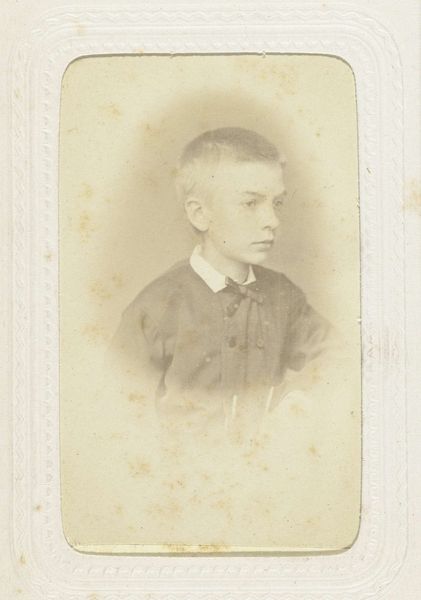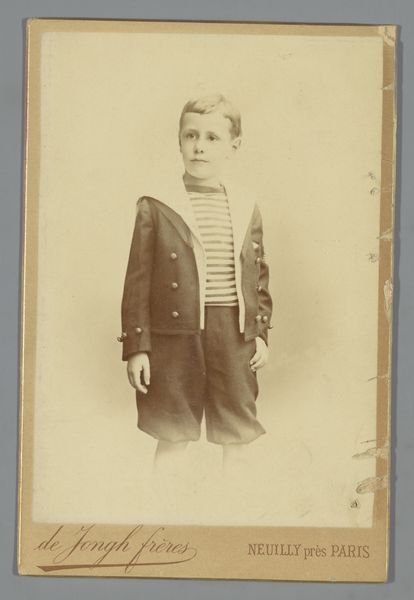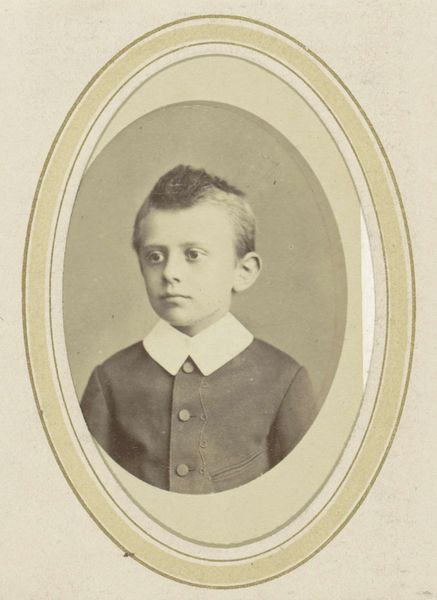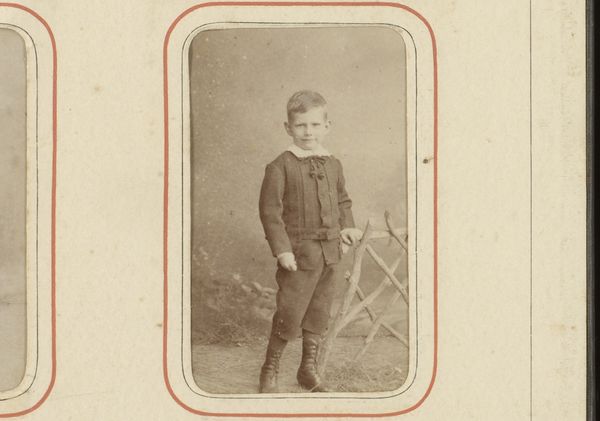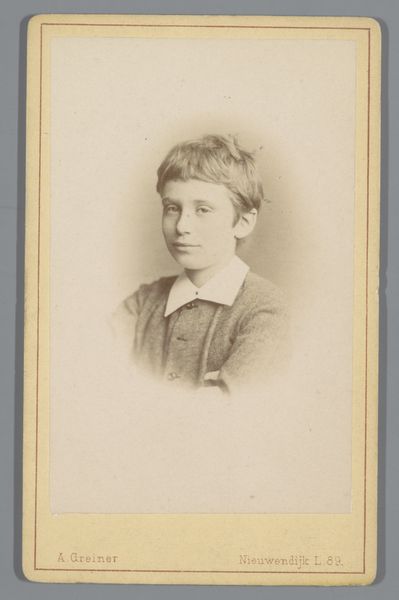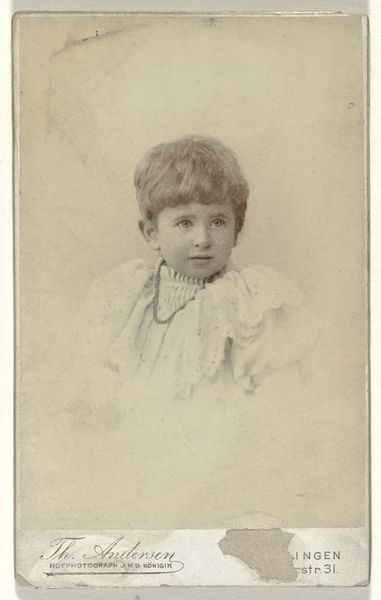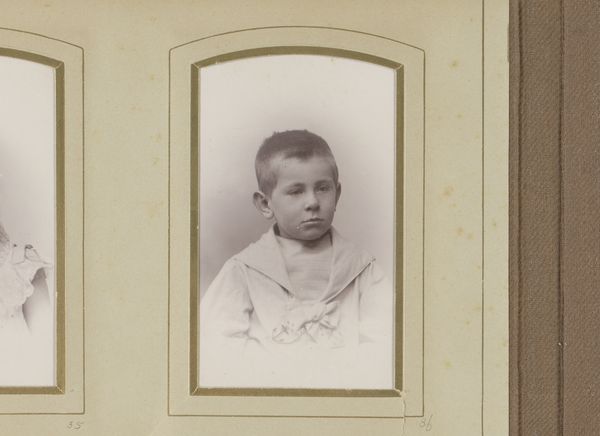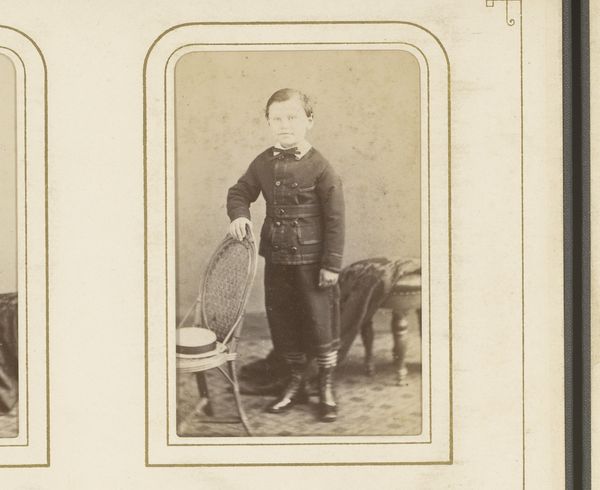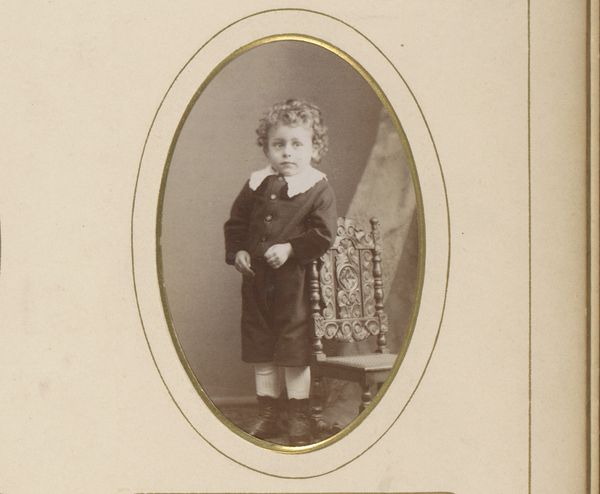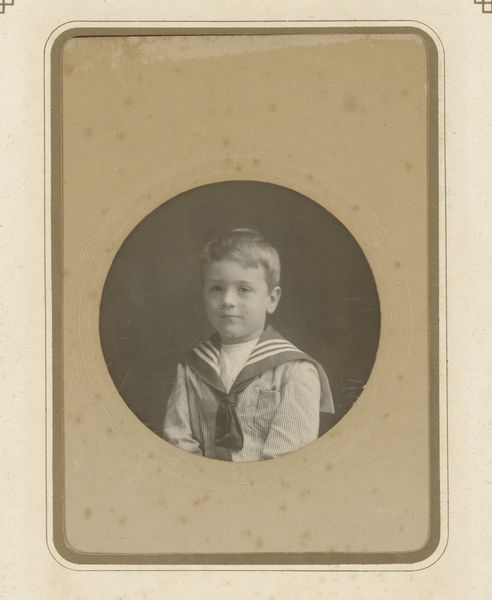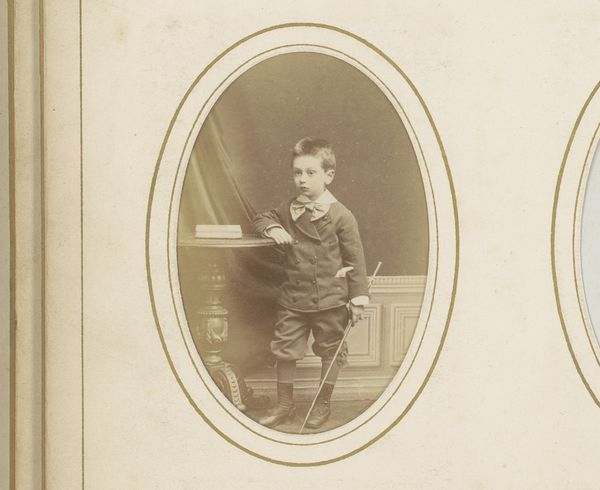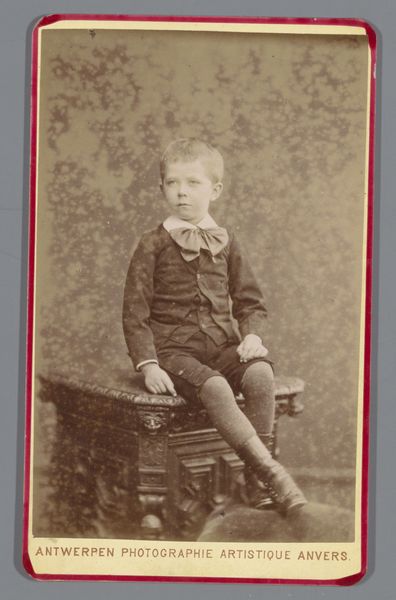
Dimensions: height 83 mm, width 55 mm, height 302 mm, width 146 mm
Copyright: Rijks Museum: Open Domain
Editor: This is a gelatin-silver print, "Portret van Guus Kessler in matrozenpak," dating from around 1890 to 1910. It's currently held at the Rijksmuseum. The most immediate feeling I get is of innocence, even a slight melancholy, due to the child's expression. What symbols stand out to you? Curator: Well, the most obvious, isn't it? The sailor suit. Think of its semiotic weight! For the rising bourgeois of the late 19th century, this was a symbol of upward mobility, aspirations towards a life of exploration, even empire. Notice how it positions the boy – young Guus – within a specific societal narrative. Does his slightly somber expression then hint at the burdens such a position entails? Editor: So, the clothing is speaking to social aspirations…interesting. And his expression? It feels… knowing, almost. Curator: Precisely. The clothing creates a societal tableau, but the face holds the individual. Consider: children at this time were often presented as miniature adults. Their clothing reflected that, but photography also offered something new. A capturing of fleeting expressions, a hint of interiority. Perhaps that melancholy you noted isn't just inherent but is also, subtly, a form of resistance against that "miniature adult" ideal. How else does the artist complicate this image, visually? Editor: I see what you mean. And perhaps the somewhat faded nature of the gelatin print enhances the feeling that it is from a bygone era and forgotten norms. The artist also used some light brushstrokes which almost camouflage the child against the background. Curator: Absolutely. The choices – the suit, the pose, the photographic medium itself – create layers of meaning about childhood, aspiration, and social expectation. I will be sure to consider them more carefully moving forward! Editor: I feel as though I have a better understanding of portraiture now, especially concerning historical and social context.
Comments
No comments
Be the first to comment and join the conversation on the ultimate creative platform.
